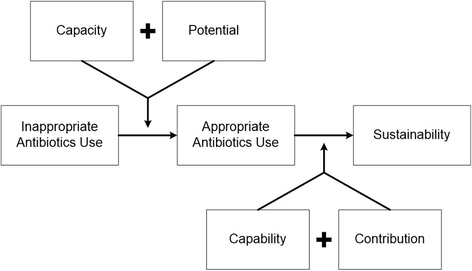Protocol to disseminate a hospital-site controlled intervention using audit and feedback to implement guidelines concerning inappropriate treatment of asymptomatic bacteriuria
- PMID: 29351769
- PMCID: PMC5775527
- DOI: 10.1186/s13012-018-0709-x
Protocol to disseminate a hospital-site controlled intervention using audit and feedback to implement guidelines concerning inappropriate treatment of asymptomatic bacteriuria
Abstract
Background: Antimicrobial stewardship to combat the spread of antibiotic-resistant bacteria has become a national priority. This project focuses on reducing inappropriate use of antimicrobials for asymptomatic bacteriuria (ASB), a very common condition that leads to antimicrobial overuse in acute and long-term care. We previously conducted a successful intervention, entitled "Kicking Catheter Associated Urinary Tract Infection (CAUTI): the No Knee-Jerk Antibiotics Campaign," to decrease guideline-discordant ordering of urine cultures and antibiotics for ASB. The current objective is to facilitate implementation of a scalable version of the Kicking CAUTI campaign across four geographically diverse Veterans Health Administration facilities while assessing what aspects of an antimicrobial stewardship intervention are essential to success and sustainability.
Methods: This project uses an interrupted time series design with four control sites. The two main intervention tools are (1) an evidence-based algorithm that distills the guidelines into a streamlined clinical pathway and (2) case-based audit and feedback to train clinicians to use the algorithm. Our conceptual framework for the development and implementation of this intervention draws on May's General Theory of Implementation. The intervention is directed at providers in acute and long-term care, and the goal is to reduce inappropriate screening for and treatment of ASB in all patients and residents, not just those with urinary catheters. The start-up for each facility consists of centrally-led phone calls with local site champions and baseline surveys. Case-based audit and feedback will begin at a given site after the start-up period and continue for 12 months, followed by a sustainability assessment. In addition to the clinical outcomes, we will explore the relationship between the dose of the intervention and clinical outcomes.
Discussion: This project moves from a proof-of-concept effectiveness study to implementation involving significantly more sites, and uses the General Theory of Implementation to embed the intervention into normal processes of care with usual care providers. Aspects of implementation that will be explored include dissemination, internal and external facilitation, and organizational partnerships. "Less is More" is the natural next step from our prior successful Kicking CAUTI intervention, and has the potential to improve patient care while advancing the science of implementation.
Keywords: Antibiotic stewardship; Asymptomatic bacteriuria; Audit and feedback; Dissemination; Guidelines implementation; Urinary tract infection.
Conflict of interest statement
Ethics approval and consent to participate
Our study was approved by the Institutional Review Board of Baylor College of Medicine and the Research and Development Committee of the Michael E. DeBakey Veterans Affairs Medical Center.
Consent for publication
Not applicable.
Competing interests
The authors declare that they have no competing interests.
Publisher’s Note
Springer Nature remains neutral with regard to jurisdictional claims in published maps and institutional affiliations.
Figures
References
-
- Gupta K, Hooton TM, Naber KG, Wullt B, Colgan R, Miller LG, Moran GJ, Nicolle LE, Raz R, Schaeffer AJ, et al. International clinical practice guidelines for the treatment of acute uncomplicated cystitis and pyelonephritis in women: a 2010 update by the infectious diseases society of America and the European society for microbiology and infectious diseases. Clin Infect Dis. 2011;52(5):e103–e120. doi: 10.1093/cid/ciq257. - DOI - PubMed
-
- Spivak ES, Burk M, Zhang R, Jones MM, Neuhauser MM, Goetz MB, Cunningham FE. Management of urinary tract infections medication use evaluation g, management of urinary tract infections medication use evaluation g: management of bacteriuria in veterans affairs hospitals. Clin Infect Dis. 2017;65(6):910–917. - PubMed
Publication types
MeSH terms
Substances
Grants and funding
LinkOut - more resources
Full Text Sources
Other Literature Sources
Medical




